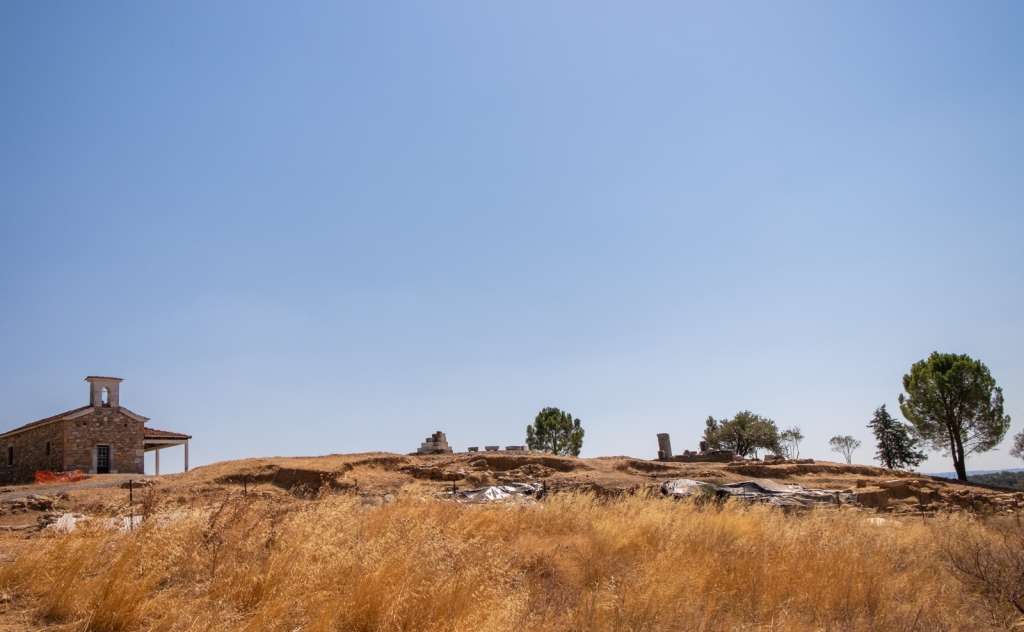Sanctuary of Amyklaios Apollo

The Sanctuary of Amyklaios Apollo (also known as the Sanctuary of Hyacinth and Apollo) is located on the hill of Agia Kyriaki, Amykla, just 5 km south of Sparta. It is considered one of the most important and beautiful monuments in Greece. The sanctuary of Amykles is the first organised initiation and cult sanctuary in Greece. It is associated with the worship of Hyacinth - the pre-Hellenic god of vegetation with his sister’s Polyvia. Later, Dimitra and her daughter Persephone were identified with them.
The first excavator of the sanctuary was archaeologist Christos Tsountas, in 1889-1990, who revealed a built wall and the courtyard of the temple. The excavation was continued, in 1904, by archaeologist A. Furtwaengler and architect E. Fiechter. In 1907, the excavations continued by A. Skias, who moved the church of Agia Kyriaki, under which the throne of Amyklaios Apollo was found. In fact, research has shown that the entire church of Agia Kyriaki has been built from the sanctuary material. The excavation was continued, in 1924, by E. Buschor and W. von Massow. A colossal marble threshold was found built into the church of Prophet Elias in Sklavochori. In the same church, a total of 15 ancient architectural members, sculptures or capitals (and another one in Agioi Theodoroi) have been found. In Agios Nikolaos' church, architectural material from the throne, which had been integrated, was also found.
The following myth is attributed to the Sanctuary of Amyklaios Apollo: Hyacinth (the youngest son of Amykla and Diomedes) was favoured by God Apollo. Apollo inadvertently killed him with the disc during an archery match between the two. A variation of the myth attributes Hyacinth's death to wind Zephyrus, who deliberately pushed the disk of Apollo on the head of Hyacinth because he was in love with him and envied him. It is said that at the point where the blood fell from the wound Hyacinth, the gorgeous flower, grew. Hyacinth was buried in Amykles, and above his altar, the "Apollo's throne" was built, a peculiar building with galleries and rooms dating back to the 6th century BC. In the centre of the colossal seat, the columnar statue of Apollo was placed. According to Pausanias, the statue was of three pillars, about 14 metres tall. The statue was holding a spear and a bow in his hands while wearing a helmet on his head. The throne was the work of sculptor Vathiklis, from Magnesia in Asia Minor and dated back to the end of the 6th century BC. The facade of the building (on the right and left) was supported by four female figures, two Charites and two Hours. Scholars had concluded that the statue pre-existed at this place for at least half a century before the throne was built. Today, members of the mixed style (Doric and Ionian) are displayed at the Archaeological Museum of Sparta. The epistyle sections, the pillars, the floor and ceiling slabs, the pilasters for the doors, the vertebrae of the columns, etc., stand out.
Finally, the "Hyacinths", which were celebrations and games during the Laconian month Ekatomvea (July), took place in the Sanctuary.



